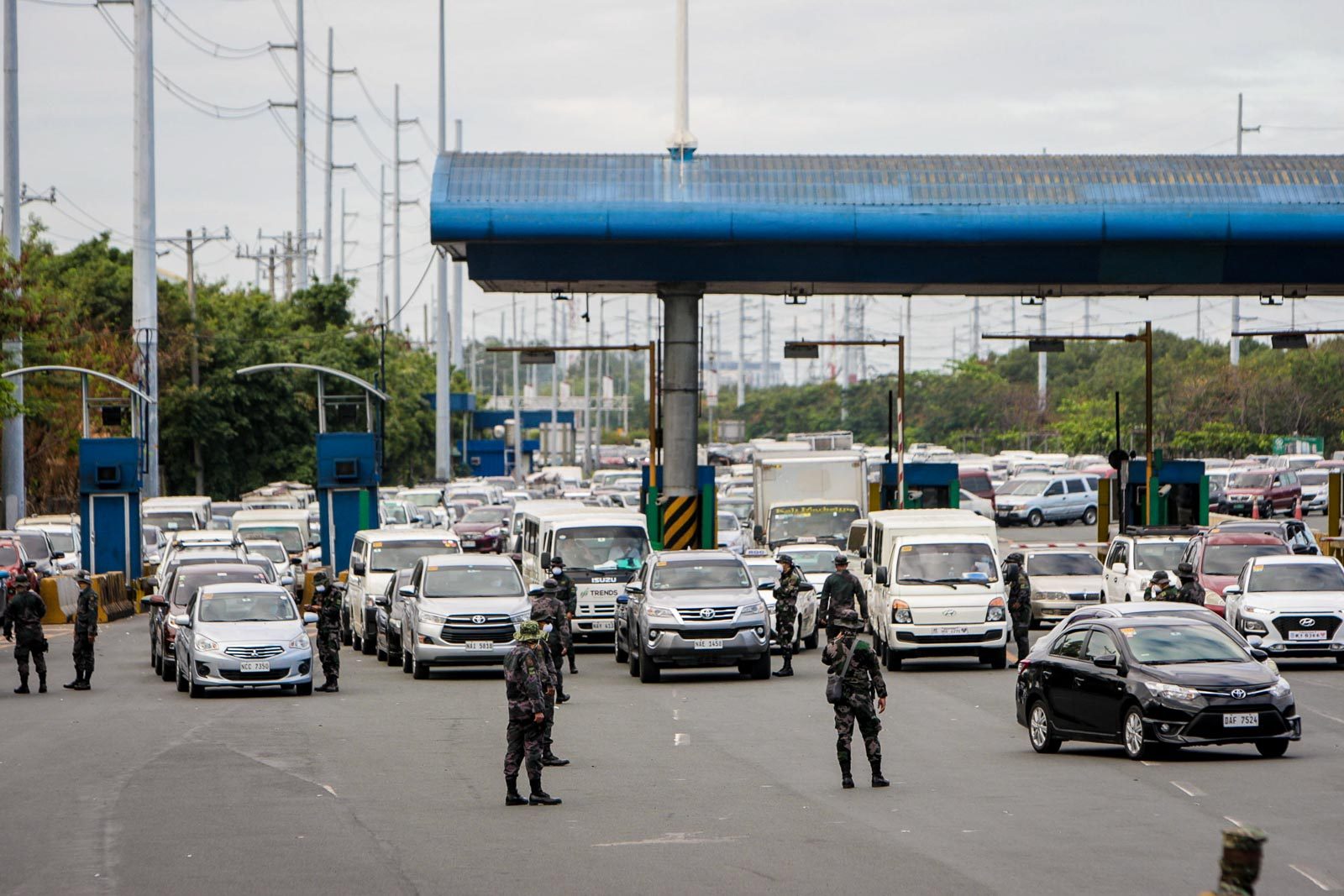SUMMARY
This is AI generated summarization, which may have errors. For context, always refer to the full article.

MANILA, Philippines – As Metro Manila nears the end of its third week on lockdown, the Philippine government and a group of Filipino IT professionals deployed the use of QR codes to hasten the passage of frontliners at checkpoints.
Cabinet Secretary Karlo Nograles, Science and Technology Secretary Fortunato Dela Peña, Defense Secretary Delfin Lorenzana, Information and Communications Technology Assistant Secretary Manny Caintic, along with DEVCON founder Winston Damarillo introduced what was called the “RapidPassPH” System which will roll out for wide use on Monday, April 6.
The system, commissioned by the Department of Science and Technology, aims to remove congestion, speed up deliveries, and protect checkpoint frontliners by lessening personal contact with commuters passing through.
Dela Peña described the system as a “virtual identification system that utilizes QR-code-based technology to provide ease for frontliners and priority vehicles,” such as those delivering food and medicine.
DEVCON, a group of Filipino developers and IT professionals, developed the system for the government for free.
How it works: Frontliners and companies providing essential goods can apply for their QR codes through the RapidPass website. After this, the request will be sent to relevant government agencies for approval.
Once approved, applicants will receive a link to their QR code through email or text message at the numbers used to register. Codes can be printed out and stuck to vehicles or saved on phones to scan at checkpoints.
Damarillo said the approval process should take some few hours.
If a frontliner is unable to save a photo of the QR code or print it out, a unique code will be sent through text message which can be given to police for verification at checkpoints.
At checkpoints, RapidPass lanes would be set up and police would scan QR codes, after which frontliners and and others authorized to pass would be able to continue their trip.
Nograles said the RapidPass is not mandatory for frontliners but urged those who can to apply for it as it would cut the time needed to pass through checkpoints.
Meanwhile, the government said it would deploy 200 phones to Metro Manila’s 56 checkpoints. Most critical of this is the Marikina-Marcos Highway area, where traffic is heaviest.
Damarillo said the QR system has been tested in both low traffic and high traffic checkpoints. They expect to roll it out across the capital region on Monday, April 6.
What will happen to my data? Damarillo and Caintic said they would erase the data after the RapidPass was no longer needed.
They gave assurances that during the use of the system, only QR cases and cellphone numbers would be collected.
What’s the impact? The use of QR codes is seen to unclog chokepoints and facilitate quicker flow of goods coming into and out of Metro Manila.
The system was also made to prioritize frontliners when they pass through checkpoints going to work.
The Philippines on Friday counted 3,018 coronavirus cases, including 136 deaths and 52 recoveries. – Rappler.com
Add a comment
How does this make you feel?
There are no comments yet. Add your comment to start the conversation.